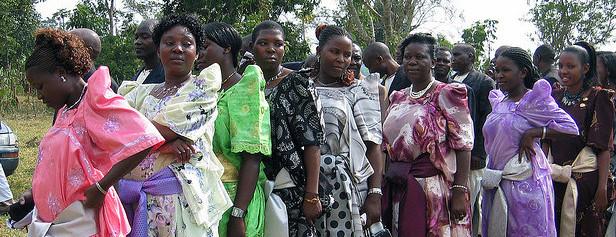Introduction-Kenya’s politics of violence and accountability
TThis article is part of a debate organized by Oxford Transitional Justice Research (OTJR) in collaboration with Moi University (Eldoret) and Pambazuka News. A selection of essays based on this debate will be published in an edited volume by Fahamu Books. For PDF documents of the debate please go to www.csls.ox.ac.uk/otjr.php.
The handover of the names of the suspects behind Kenya’s post-election violence to the International Criminal Court (ICC) opens an uncertain chapter in the country’s history of political violence. This development has generated a vibrant debate among Kenyans: What should accountable politics look like? What is the role of transitional justice in getting us there? Under what conditions might the current turn of events contribute to the country’s long term stability?
This forum offers a space where concerned Kenyans can come together with a range of experts, scholars, practitioners, and commentators to discuss fundamental questions about how Kenya got here, and the strategies necessary to move the country forward. This essay provides an overview of recent debates on violence and accountability in Kenya and summarizes the first set of contributions to this forum.
Any policy aimed at addressing Kenya’s current crisis necessarily assumes the existence of a clear understanding of what caused the violence in the first place. While some scholars explain the recent cycle of violence as a manifestation of the negative side of electoral democracy, where elites fight over control of the state in a context of zero-sum politics, others emphasize the trend of informalizing violence, where elites set up, control, or manipulate an alternative security infrastructure (which, among other things, can be deployed to coerce opponents). Others still find these explanations incomplete, and instead cite structures of inequality, with a particular focus on grievances over access to land and resources. Many of these explanations privilege the agency of the political class in manipulating ethnic cleavages.
Daniel Branch’s essay in this series disagrees with many of these accounts’ focus on elites, as they insufficiently interrogate the agency of ordinary Kenyans in the violence. Normalization of violence, Branch argues, is evidence of a society’s shifting moral landscape: Kenyans increasingly accept violence in a range of arenas as a means of exerting authority. Elite manipulation of that violence to reduce electoral uncertainty forms only one expression of a wider social phenomenon. Branch’s conclusion points to a question that continues to be debated in response to violence by state agents: is there moral and immoral violence? Or is it the case that (as with the dichotomy of political and apolitical violence that Branch finds unhelpful) in time the distinctions dissipate?
Daniel Waweru’s essay also discounts many of the common accounts for the post-election violence, and offers in their place an explanation based on the permeation of the majimboist ideology outside of the political class and into the community. This view carries implications for what is politically feasible in the current considerations of accountability and constitutional reform: Waweru argues that while President Moi informalized violence during his reign as a strategy of strengthening the ethnocentric majimboist fringe, his exit from power terminated state sponsorship for the majimboist project, leading Kalenjin opinion leaders to be more radicalized, and their project of ethnic cleansing more ideological and popularized. Consequently, the very majimboist elites who must come into the political fold for there to be effective constitutional reform in Kenya are the same ones who would be marginalized in processes of accountability. In what appears to be a variation of the “˜peace v justice’ debate that has characterized Sudan, Uganda and elsewhere, Waweru argues that Kenya can have either reform or accountability, but not both.
Nonetheless, Gabriel Lynch’s essay argues that both accountability and reform are essential for Kenya, although she sees little evidence that the state will act differently from previous episodes of violence. Highlighting that reforms to date have been largely superficial and procedural with little focus on how complex issues coalesce, she offers three concerns on which the state must focus: the presidency and its zero-sum politics, impunity and the informalization of violence, and the politics of ethnicity. Further, she points out that the manner in which Kenyan (and African) politics are framed and understood – as “˜good’ citizen v “˜bad’ politician, for instance – misses the different meanings of history, incentives and reciprocity in political processes.
Despite Lynch’s scepticism, the handover the Waki envelope to the ICC has generated a vibrant (and hopeful) discussion on the importance of historical clarification and transitional justice in general, and of prosecutions in particular. However, the Kenyan media is dominated by confusing descriptions of which mechanism is legally feasible or politically desirable. What happens when many Kenyans appear to prefer the ICC and have no trust in a national process; international NGOs prefer a domestic process because, they argue, Kenya has the institutional capacity that can deliver justice with some modifications (although an equally persuasive explanation for this preference from international NGOs may be the general reluctance among many ICC supporters to see the Court in yet another African case); prominent ODM parliamentarians declare their intention to actively sabotage efforts for domestic prosecutions; and cabinet members from both parties argue that the only way is a domestic tribunal because to do otherwise would imply that Kenya is a failed state? Which of these interests should matter more? Who decides? Is it possible for this discussion to emphasize objectives of accountability, leaving processes as secondary considerations?
In all the confusion, another important discussion is glossed over, as Tim Murithi emphasises in this forum: he makes intelligible the reasons why Kofi Annan handed over the envelope to the ICC prosecutor. While the three ministers who went to Geneva have oscillated between shock at an Annan “˜betrayal‘ and (reluctant) praise of Annan’s “˜patience’, it remains unclear why Annan acted as he did. Murithi argues that Annan passed the envelope to the ICC because the coalition seemed oblivious to the fact that their disinclination for accountability placed Kenya in a high risk category in the framework of the Office of the Special Advisor of the UN Secretary General for the Prevention of Genocide. In their vacillation between doing nothing, paying lip service to prosecutions or expressing preference for a Truth, Justice and Reconciliation Commission, political leaders exhibited a lack of political vision for meeting the justice needs of victims, thus forcing Annan’s hand.
In thinking about lessons that we can draw from the past violence, the essay by Wanjiru Kamau-Ruternberg analyses how the performance of gendered violence in the form of forcible male circumcision plays into ethnic politics. She argues that circumcision offered a framework for Mungiki violence against Luo men because it was embedded in a narrative of feminizing ethnicities; a narrative was alive in the discourses of Kenyatta, found confidence in the period of the draft constitution referendum, and was ironically embraced by Raila Odinga himself. In this atmosphere, where the feminized could be violated, it was only a matter of time before the gendered “˜ecology of violence’ expanded to include feminized Luo men.
Sisule Musungu‘s contribution focuses on the way forward. His summary of a 2000 report on possible future Kenyan scenarios emphasizes the need to avoid the maintenance of the status quo – what the project terms the “˜el nino’ scenario – as the outcome of such a scenario can only be fractured decline. He argues that, much like the late years of the Moi era, Kenya has reached another crossroads, and it might be time to dust off and reconsider the discussions that inspired change a decade ago.
Even so, the possible political outcomes from the current crossroads are not obvious. Might Kenya be the case where the heretofore weak ICC “˜deterrent‘ argument gains relevance? For instance, to what extent are shifts in Kenyan political and ethnic alliances a response to a credible threat of prosecutions? Does the potential involvement of the ICC (and the subsequent excitement about prosecutions) have the capacity to de-ethnicize and de-collectivize the post-elections violence, to recast blame from communities to individuals in the political class? Or would prosecutions be inadequate for the multifaceted forms of violence experienced in Kenya? Beyond the ICC, how adequate or appropriate are the proposed transitional justice measures for the Kenyan context? What are the competing interests in Kenya’s project of political reform and accountability, and whose interests are likely to triumph?
These and other questions will be tackled in future essays in this forum. We welcome your reflections and contributions.
*Lydiah Kemunto Bosire is reading for her doctorate in politics at the University of Oxford, with a research focus on transitional justice in Kenya and Uganda. She is also the co-founder of Oxford Transitional Jusitice Research (OTJR). Previously, she worked at the International Center for Transitional Justice, the WHO and the UN.
The above article is available as a PDF







hydro clore quinn https://plaquenilx.com/# hcqs 400
cialis pills cialis without a doctor prescription